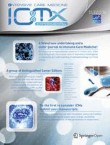Recovery of organ-specific tissue oxygen delivery at restrictive transfusion thresholds after fluid treatment in ovine haemorrhagic shock
Fluid resuscitation is the standard treatment to restore circulating blood volume and pressure after massive haemorrhage and shock. Packed red blood cells (PRBC) are transfused to restore haemoglobin levels. R...
